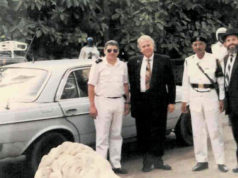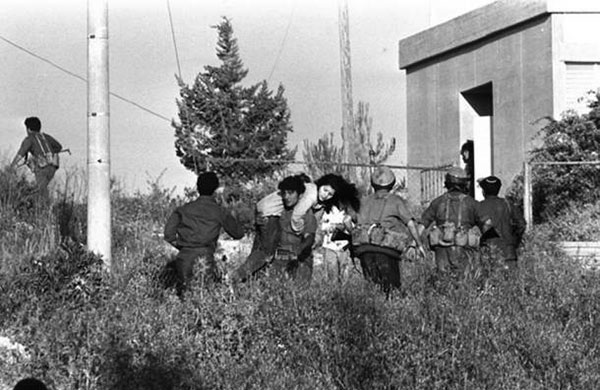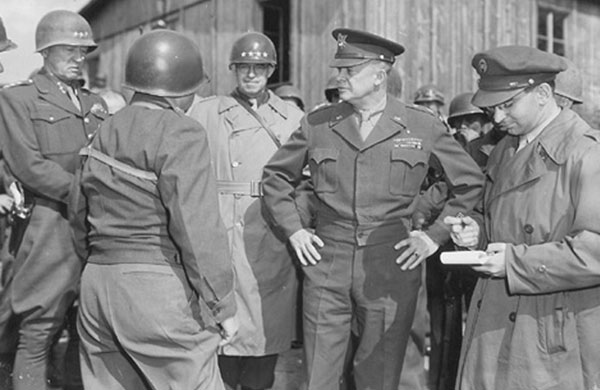 In olden times, Sephardic Jews in the Balkan states and Turkey were married very young. The girl was 14 or younger, the husband 18 or 20. It was considered a great humiliation for the parents if their children were still unmarried after that age.
In olden times, Sephardic Jews in the Balkan states and Turkey were married very young. The girl was 14 or younger, the husband 18 or 20. It was considered a great humiliation for the parents if their children were still unmarried after that age.
The young people were not allowed to voice their inclinations or aversions in the choice of a partner. That was strictly the parents’ concern. Any opinion voiced by the girl or boy was considered a gross lack of respect. The parents also settled the details connected with the dowry and trousseau. The couple did not know each other until they were engaged. Even after the engagement they were permitted to see each other only on Passover and Sukkot an interval of six months. The young man visited his bride accompanied by his father. This was the only opportunity for him to risk a glance at her. Sometimes they would not see each other at all until their wedding day.
Rich families preferred to have their children marry into families of rabbis who, although poor, were considered intellectuals and were highly esteemed. Wealthy families and those of the highest social spheres considered it a great honor to have a Haham (scholar) for a son-in-law. The young rabbi, adored by the whole family, was encouraged to continue his studies as long as he chose.
The engagement usually lasted one year. This time was necessary for the bride and her family to prepare the trousseau. The bride was to provide complete bed including the mattress. The day on which the wool for the mattress was bought and washed became a family celebration. Relatives, girl friends and neighbors all came to help clean and bleach the wool.
The series of celebrations culminating in the wedding itself began with the almosamma (a word of Arabic origin, not properly traced). The almosamma took place at the bride’s house on the Saturday night preceding the week of the wedding. Friends and relatives of the bride came to sing and dance, often until daybreak, enjoying sweets, pastries and other refreshments.
From this day on the groom was not to see the bride until the wedding. A custom popular even today among Sephardic families was for the family to bake a certain kind of pastry, called bollitos de susan, and send them to their relatives and to the bride’s family as a symbol of churban, or sacrifice, to protect the newlyweds against envy and the evil eye.
The day before the wedding was a very busy day for the couple, especially for the bridegroom. His duties were to rent a hall for the ceremony, arrange all the legal aspects of the wedding, hire servants for the banquet and the orchestra, and give instructions to the man in charge of the invitations, which were extended verbally to each guest.
The combidador (inviter) was an especially colorful character. He was handed a list of relatives and friends of both families. He then had to go from house to house, loudly announcing the wedding and inviting the persons on the list. When entering a patio of a dwelling, he would call the lady of the house whose name was on his list. When she appeared, the ‘inviter’ solemnly announced the good news to her, adding that she, her husband, children, parents, relatives and friends were invited to the wedding. Other women of the neighborhood would stand at their doors and windows, listening and commenting, full of curiosity about the young couple and their families. In the past century, the office of the combidador was held by a man; prior to that his female counterpart, the combidadora, was entrusted with the invitations.
A few days before the wedding two experts, called precladores, arrived at the bride’s house to evaluate her trousseau, which was displayed on tables, beds and chairs. This led to lengthy discussions between the appraisers and the groom’s friends. The event usually took place on a Saturday prior to the wedding to show that the bride’s family had kept all its promises. The trousseau was then sent to the groom’s house with great pomp, escorted by musicians playing Turkish music.
In exchange, the groom gave the musicians a silk-wrapped package for the bride containing perfumes, ointments and other accessories for the Turkish bath she was to take before the wedding. He also included a purse with a few gold pieces.
The ritual bath of the bride was a solemn event for the girl, but little by little it degenerated into a noisy ceremony of merrymaking, jumping and dancing, songs and music. The morning of the wedding, the bride visited the hammam (Turkish bath), escorted by musicians and female relatives, carrying the gift the groom had sent her for this occasion. She wore a splendid dress and was covered with jewelry.
The excess of noise and luxury in an act meant to be an intimate ceremony induced the rabbinical authorities of the eighteenth century to prohibit music on the way to or from the bathhouse. The bride was not to wear jewelry other than a string of pearls and was not to drink wine or other fermented drinks. During the ritual of the bath she immersed herself three times in a tub. Then, anointed and perfumed, in the midst of singing, dancing and the jangling of tambourines, she returned home.
The bride was dressed in the afternoon, while the groom, his father, his father-in-law, relatives and friends spent the afternoon at special services in the synagogue. The rabbi called upon the young man to swear a solemn oath to keep the clauses stipulated in the ketubah (marriage contract).
After the services, the groom and his party left for the hall where the wedding was to take place. The bride had already arrived and was seated between the two mothers.
Up to the eighteenth century every woman seated next to the bride covered her face with a black veil. This custom, originating in a Kabbalistic doctrine, arose from the fact that since the bride was very young and was not yet too attractive, it was feared that the beauty of her mother or mother-in-law would attract more attention.
The blessing was given to the couple while standing underneath a tallit held over their heads by four men. It was followed by the reading of the ketubah and the breaking of the traditional wine glass. The wedding lasted four or five hours. Lively music was played and women danced half-Turkish, half-Spanish dances. In the evening the guests began to leave. Only the more intimate friends and relatives remained for the banquet given by the bridegroom in his new apartment. During the dessert, wine made by Jewish hands was served and the music, songs and dances began once more.
Once again a rabbinical order intervened against the excess of merrymaking. The men were forbidden to play musical instruments in the presence of women, and the women were forbidden to invite men to dance and to dance with the musicians.
Around midnight all the guests had left and only the groom’s mother or eldest female relative remained, along with the parents with whom the young couple were to live for the time being. The bride was led to the bridal chamber by her mother, who gave her a blessing, encouraging her with good advice for the great event to come. In the meantime the groom was receiving the same kind of instructions from his relatives. The tradition was that the groom’s mother stood vigil outside their door, available, should the need arise, in view of the extreme youth of the newlyweds.
The morning after the wedding the bride appeared dressed in her new clothes, suitable for a married woman, which she would wear from now on. She would bend before her father-in-law and kiss his hand, receiving his blessing, together with a gift of jewelry. It was also a tradition that the bride’s family distribute sweets and confections in the neighborhood on the morning after the wedding as a sign of rejoicing that the bride was found chaste and pure.
The seven days after the wedding were a continuous holiday for the newlyweds. The groom did not leave his apartment the whole week. Friends visited through out the day. The groom’s mother was in charge of feeding the visitors and practically did not leave the kitchen.
Saturday after the wedding was a very festive day. The groom finally left the house to visit the synagogue together with his father, father-in-law, and friends, where, certain passages of the Torah were read in his honor. Otherwise it was another day for visits. In the morning the groom’s friends and relatives arrived. The afternoon was dedicated to women and children. Good wishes were expressed with the traditional Hebrew words B’siman Tov (for good luck), which are still used at today’s Sephardic weddings. A servant would then pass and sprinkle the guests with rose water from a silver flask. Sweets and confections were served. As was usual on all occasions of Jewish social life, the poor were not forgotten. The parents of the young couple solemnly invited them for a distribution of wine and rice.
The last day of the wedding week was called ‘The Day of the Fish.’ In the morning, the young husband went to the market for his first purchase as head of a family and bought a good fish. At home the fish was painted, adorned with flowers and put in a dish on the floor.
In the presence of relatives and neighbors, the bride stepped three times over the fish, a symbol of
fertility.
Another festive meal served to the intimate members of the family, lasting all day and often late into the night, bringing to an end the period of celebrations, banquets and visits that had begun with the almosamma. After this festive evening, the last guest left and the young couple settled down for their new life.
These simple yet picturesque and patriarchal customs were practiced until the end of the nineteenth century. The Turkish Revolution and the great fire that destroyed much of Salonika in 1917, including most of the Jewish quarter, forced the Sephardim to disperse throughout the city and put an end to the ancient traditions to which they were so deeply attached. In addition, they were even more undermined by the rapidly growing trend of assimilation and the modernization of social life. Few of the old traditions are still practiced or even known to the present generation.
____________
Henry V. Besso, born in Salonica, was a former founding officer of the Foundation for the Advancement of Sephardic Studies and Culture.



